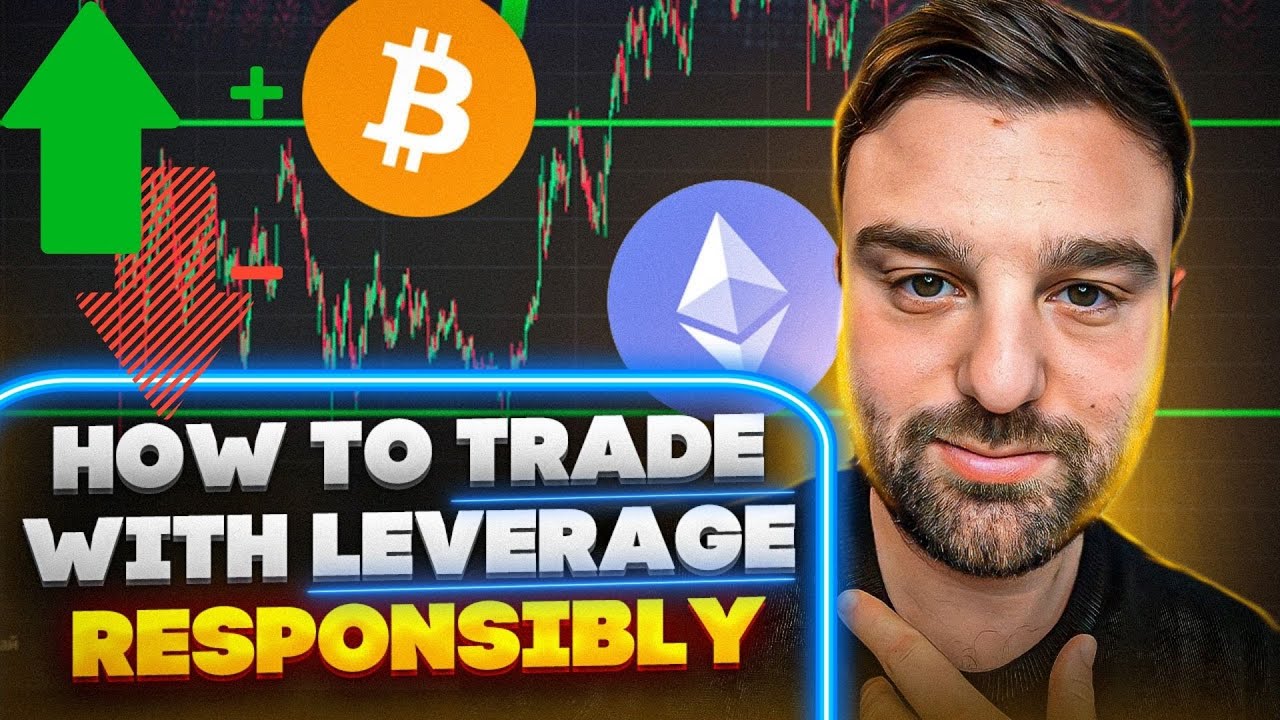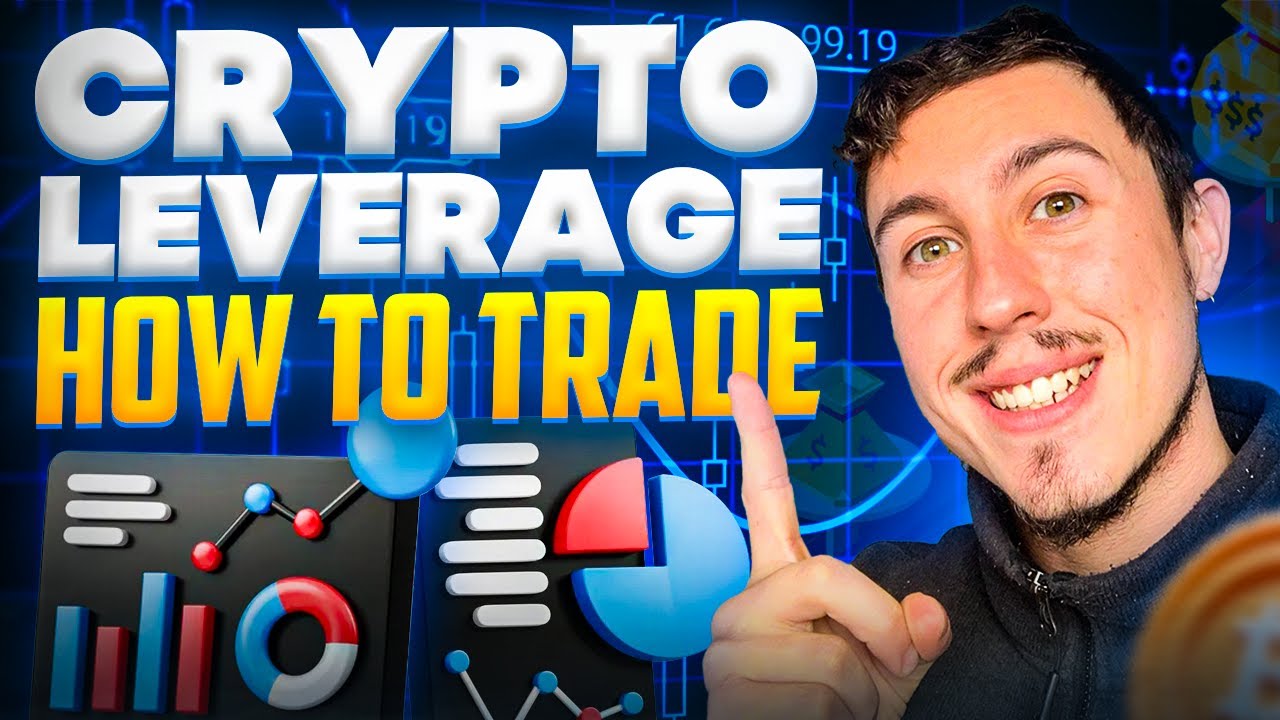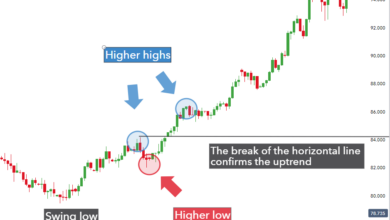
Crypto Leverage Trading Risk-Free Strategies
How to Use Leverage Trading in Crypto Without Losing Everything? This guide delves into the exciting world of leverage trading in crypto, exploring its potential rewards and inherent risks. We’ll equip you with the knowledge and strategies to navigate the volatile crypto market with confidence and minimize potential losses.
Leverage trading can amplify profits, but it also magnifies losses. This comprehensive guide will illuminate the crucial elements for successful leverage trading in the crypto space. We’ll discuss everything from understanding leverage itself to choosing the right platform and mastering the psychology of trading. Learning to manage risk, employ effective strategies, and maintain emotional control is key to leveraging the potential of crypto trading without jeopardizing your capital.
Understanding Leverage Trading in Crypto: How To Use Leverage Trading In Crypto Without Losing Everything

Source: bnbstatic.com
Leverage trading in cryptocurrency allows traders to control larger positions than they could with their own capital. This amplification of potential profits comes with a significant increase in risk. Understanding how leverage works and its inherent dangers is crucial for navigating the crypto market successfully.Leverage, in essence, is borrowing capital from a platform to increase your buying power.
Think of it like borrowing money to buy more stock in a company. You’re essentially using someone else’s money to magnify your potential returns, but also your potential losses.
The Concept of Leverage in Crypto Trading
Leverage in crypto trading works by enabling you to control a larger position size than your initial investment would allow. A 2x leverage ratio, for example, means you can control $2 of crypto assets with only $1 of your own capital. This magnification of buying power is the core principle behind leverage trading.
How Leverage Works in Practice
Imagine you have $1,000 to trade Bitcoin. With 2x leverage, you can effectively control $2,000 worth of Bitcoin. If Bitcoin’s price increases by 10%, your $2,000 position gains $200. This 10% gain on a leveraged position translates to a 20% return on your initial $1,000 investment. However, if Bitcoin’s price drops by 10%, your $2,000 position loses $200.
This 10% loss on a leveraged position translates to a 20% loss on your initial $1,000 investment.
Potential Benefits of Using Leverage
Leverage can amplify gains significantly. A small price movement can lead to substantial profits when using leverage. This can be particularly attractive to traders who believe in a strong price movement in a specific direction. It also allows for participation in larger trades that might not be accessible with only a limited capital.
Potential Risks of Using Leverage
The flip side of leverage is that losses are also amplified. A seemingly small price movement against you can quickly wipe out a substantial portion, or even all, of your capital. This amplified risk is a crucial factor to consider when engaging in leverage trading. It’s essential to carefully manage risk and only trade with capital you can afford to lose.
Comparing Leverage Ratios in Crypto Trading
| Leverage Ratio | Position Size (with $1,000) | Potential Profit/Loss (1% Price Change) | Risk Assessment |
|---|---|---|---|
| 2x | $2,000 | $20 Profit/Loss | Moderate |
| 5x | $5,000 | $50 Profit/Loss | High |
| 10x | $10,000 | $100 Profit/Loss | Very High |
| 20x | $20,000 | $200 Profit/Loss | Extremely High |
This table illustrates how different leverage ratios affect potential profits and losses with a $1,000 initial investment and a 1% price change. As the leverage ratio increases, so does the potential for profit, but also the risk of loss. The decision of which leverage ratio to use depends heavily on your risk tolerance and trading strategy.
Identifying Risks Associated with Crypto Leverage Trading
Leverage trading, while offering the potential for substantial profits in the cryptocurrency market, also carries significant risks. Understanding these risks is crucial for navigating this complex landscape and mitigating potential losses. A trader must be acutely aware of the inherent dangers, not just the potential rewards, to avoid devastating consequences.The allure of amplified returns can often overshadow the potential pitfalls.
However, the amplified risks are equally important to understand. The high degree of leverage magnifies both profits and losses, making responsible risk management paramount.
Learning how to use leverage trading in crypto can be tricky, but it doesn’t have to lead to disaster. A crucial aspect is understanding risk management, and that includes diversification. Checking out alternative ways to earn crypto, like passive income strategies detailed in How to Make Money in Crypto Without Trading or Mining , can help you broaden your approach.
Ultimately, though, responsible leverage trading, combined with a strong understanding of the market, is key to avoiding major losses.
Common Pitfalls and Mistakes
Leverage trading, like any high-risk investment strategy, requires careful consideration. Traders frequently fall victim to the temptation of over-leveraging, chasing quick profits, or failing to understand the complexities of the market. This can lead to disastrous outcomes. A common mistake is entering trades without a well-defined risk tolerance and a strict stop-loss strategy. Another frequent mistake is failing to monitor market conditions and adjust positions accordingly.
A lack of understanding of margin calls and their implications is a critical error that can result in significant losses.
Margin Calls and Their Implications
Margin calls occur when the value of a trader’s position falls below the required margin level. This forces the trader to deposit additional funds to maintain the position or risk having their position liquidated. Failure to meet a margin call can result in substantial losses, potentially exceeding the initial investment. Understanding the specific margin requirements and the procedures for meeting margin calls is essential for mitigating these risks.
Knowing the precise margin call thresholds and the corresponding actions required will aid in managing these situations effectively.
Volatility of Cryptocurrency Markets
Cryptocurrency markets are notoriously volatile, exhibiting rapid price fluctuations that can be exacerbated by leverage. Sudden market movements can quickly lead to substantial losses, especially for traders who are not adequately prepared for such volatility. A small price swing can result in a significant margin call, potentially leading to a large loss. Traders need to have a thorough understanding of the market dynamics and be prepared for unexpected price swings.
Importance of Risk Management Strategies
Risk management is crucial for success in leverage trading. A well-defined risk management strategy should encompass a strict stop-loss order, appropriate position sizing, and a clear understanding of the market’s inherent volatility. Implementing these strategies will help mitigate potential losses. A strong risk management strategy helps limit losses and protects against margin calls.
Potential Scenarios Illustrating High Leverage Use
Several scenarios can illustrate the consequences of high leverage use in crypto trading:
- A trader using 10x leverage on a cryptocurrency that experiences a 10% price drop will see a 100% loss of their initial capital.
- A trader with insufficient funds to cover a margin call will have their position liquidated, potentially leading to significant losses.
- A trader who fails to set stop-loss orders will face substantial losses if the market moves against their position.
Risk Factors Associated with Crypto Leverage Trading
| Risk Factor | Description |
|---|---|
| Market Volatility | Sudden and significant price fluctuations in cryptocurrency markets. |
| Margin Calls | Requirements to deposit additional funds to maintain positions. |
| Insufficient Funds | Inability to meet margin calls, leading to position liquidation. |
| Lack of Understanding | Inadequate knowledge of market dynamics and leverage implications. |
| Over-Leveraging | Using excessive leverage beyond one’s risk tolerance. |
| Emotional Trading | Making impulsive decisions based on emotions rather than rational analysis. |
Essential Strategies for Safe Leverage Trading

Source: ytimg.com
Leverage trading, while offering the potential for substantial profits in the cryptocurrency market, also carries significant risks. A crucial aspect of navigating this world is understanding and implementing effective risk management strategies. This section delves into essential strategies for safe leverage trading, focusing on position sizing, risk management techniques, and the use of stop-loss and trailing stop orders.
Proper implementation of these strategies can help mitigate potential losses and maximize the chance of profitable trades.Position sizing is a critical component of any trading strategy, particularly when using leverage. It involves determining the appropriate amount of capital to allocate to a specific trade. A well-defined position sizing strategy helps to control risk by limiting the potential loss on any single trade to a pre-determined percentage of your total trading capital.
Ignoring position sizing can lead to devastating losses if a trade goes against your expectations.
Position Sizing and Risk Management
Effective position sizing is fundamental to managing risk in leverage trading. It dictates the proportion of your capital allocated to each trade, thereby limiting potential losses. This ensures that even a large loss on a single trade doesn’t jeopardize your entire trading capital. A common rule of thumb is to limit the potential loss on any single trade to a small percentage of your total capital (e.g., 1-2%).
Risk Management Techniques
Various risk management techniques can be employed to further mitigate the perils of leverage trading. These techniques include setting stop-loss orders, utilizing trailing stops, and diversifying your portfolio across different crypto assets. Each technique plays a crucial role in preserving capital and safeguarding against unforeseen market fluctuations.
Stop-Loss Orders
Stop-loss orders automatically close a trade when the price of the asset reaches a predetermined level. This helps to limit potential losses by preventing the trade from worsening. They are a critical tool for protecting capital in leverage trading.
Example: If you buy Bitcoin (BTC) at $30,000 with a stop-loss order set at $28,000, your position will be closed automatically if the price drops to that level.
Stop-loss orders are effective in mitigating losses, but their effectiveness depends on setting appropriate levels. Incorrectly positioned stop-loss orders can result in the liquidation of positions before the asset recovers, potentially leading to substantial losses.
Trailing Stops
Trailing stops are stop-loss orders that adjust automatically as the price of the asset moves in your favor. This allows you to lock in profits while still protecting against potential reversals. Trailing stops are crucial for managing profits and minimizing the risk of losing profits.
Example: If you buy Ethereum (ETH) at $2,000 and the price rises to $2,500, you can set a trailing stop order at, say, 10% below the current price ($2,250). If the price continues to rise, the stop-loss order will move up with it, locking in your profit.
Common Leverage Trading Strategies
- Scalping: Taking small, quick profits from short-term price fluctuations. It requires high-frequency trading and a deep understanding of market trends.
- Day Trading: Entering and exiting trades within a single trading day. It requires significant market awareness and quick decision-making.
- Swing Trading: Holding positions for a few days to several weeks, aiming to capitalize on larger price swings. It requires more patience and analysis than day trading.
- Arbitrage Trading: Exploiting price discrepancies across different exchanges or markets to profit from the difference. It requires constant monitoring and awareness of market conditions.
Setting Stop-Loss Levels
Setting appropriate stop-loss levels requires careful consideration of the asset’s volatility and your risk tolerance. Highly volatile assets like meme coins may require tighter stop-loss levels compared to more stable assets.
Example: A highly volatile meme coin might require a stop-loss order set at 5% below the entry price, whereas a more stable coin like Bitcoin might use a stop-loss order set at 10% below the entry price.
Leverage Trading Strategies and Risk Profiles
| Strategy | Description | Risk Profile |
|---|---|---|
| Scalping | Taking small, quick profits from short-term fluctuations | High |
| Day Trading | Entering and exiting trades within a single day | Medium |
| Swing Trading | Holding positions for a few days to several weeks | Medium-Low |
| Arbitrage Trading | Exploiting price discrepancies across markets | High |
Choosing the Right Crypto Trading Platform for Leverage

Source: ytimg.com
Selecting a suitable cryptocurrency exchange for leverage trading is crucial for successful and secure trading. Choosing a platform with robust security measures, transparent fee structures, and user-friendly interfaces is paramount to mitigating potential risks. The right platform can significantly impact your trading experience and outcomes.Choosing a platform that aligns with your trading style and risk tolerance is essential.
Understanding the different features and functionalities offered by various exchanges, along with their associated fees and security protocols, is vital before committing to any platform.
Comparison of Cryptocurrency Exchanges Offering Leverage Trading
Different cryptocurrency exchanges cater to varying trading needs. To effectively leverage trading, choosing a platform that supports your preferred cryptocurrencies and trading strategies is critical. This requires understanding the specific leverage ratios offered, the supported trading pairs, and the available trading tools. Exchanges like Binance, Coinbase Pro, Kraken, and others each have unique characteristics.
Key Features to Look for in a Leverage Trading Platform
A robust leverage trading platform must possess several essential features. These features include, but are not limited to, competitive leverage ratios, a wide range of tradable cryptocurrencies and fiat currencies, low transaction fees, and user-friendly interfaces. A platform with robust security measures, including 2FA authentication, cold storage for crypto assets, and regular security audits, is essential. The ease of use and availability of comprehensive educational resources further enhance the platform’s value proposition.
Fees and Commission Structures of Various Exchanges
Fee structures vary considerably among different exchanges. Some exchanges charge maker/taker fees, while others may employ tiered fee structures based on trading volume. Understanding the specific fee structure of a platform is crucial for calculating potential costs and managing overall trading expenses. It is essential to compare fees across various exchanges and choose the one with the most favorable structure for your trading volume and frequency.
A platform’s commission structure directly affects profitability.
Importance of Understanding Platform Terms and Conditions
Before engaging with any leverage trading platform, it’s imperative to carefully review the terms and conditions. These documents Artikel the platform’s policies on leverage limits, margin calls, and other crucial aspects of trading. Understanding these conditions helps in mitigating potential risks and ensures you are aware of the platform’s expectations. Failing to review these terms can lead to unforeseen consequences.
Role of Security Measures on the Platform
Security is paramount when choosing a leverage trading platform. Exchanges with robust security measures, including multi-factor authentication (MFA), cold storage for cryptocurrency, and regular security audits, are essential for safeguarding your funds. Exchanges with a strong track record of security incidents and appropriate response mechanisms are preferable.
Table Comparing Different Leverage Trading Platforms
| Platform | Strengths | Weaknesses |
|---|---|---|
| Binance | High liquidity, wide range of cryptocurrencies, competitive fees | Potential for high volatility, complex platform for beginners |
| Coinbase Pro | User-friendly interface, strong regulatory compliance | Limited leverage options, lower liquidity compared to Binance |
| Kraken | Excellent security measures, diverse trading options | Steeper learning curve, slightly higher fees compared to Binance |
| BitMEX | High leverage, advanced trading tools | High risk profile, strict regulations may vary by jurisdiction |
Mastering the Psychology of Leverage Trading
Leverage trading in crypto, while offering the potential for substantial profits, presents a significant psychological challenge. The amplified returns are directly tied to the amplified risk, making emotional control a crucial skill for success. Understanding the influence of emotions like greed and fear on trading decisions is vital to navigating the volatility of the crypto market. This section dives into the psychological aspects of leverage trading, providing strategies for maintaining a positive mindset and achieving consistent profitability.The allure of quick gains can lead to impulsive decisions driven by greed, often overlooking fundamental market analysis and risk management.
Conversely, fear of losses can trigger premature exits, missing potential recovery periods. Recognizing these emotional pitfalls is the first step towards building resilience and making rational trading choices. Developing a robust trading plan that incorporates psychological strategies is essential for long-term success.
Emotional Aspects of Leverage Trading
Trading with leverage amplifies emotions, both positive and negative. The potential for significant gains can fuel greed, leading to over-leveraging and risky trades. Conversely, the fear of losing substantial amounts can trigger panic selling, resulting in substantial losses. Understanding and managing these emotions is critical for making rational decisions in a volatile market.
Impact of Greed and Fear on Trading Decisions
Greed, fueled by the prospect of quick profits, can lead traders to ignore risk parameters and engage in excessive leverage. Fear, triggered by market downturns, can induce impulsive exits, resulting in missed opportunities for recovery. A successful trader recognizes these emotions and consciously avoids letting them dictate their trading strategies.
Strategies for Controlling Emotions During Market Fluctuations
Maintaining a level head during market fluctuations is crucial. Implementing a well-defined trading plan that incorporates risk management strategies can help traders stay disciplined. Techniques such as setting stop-loss orders, sticking to the trading plan, and maintaining a trading journal can help mitigate emotional reactions. Regular self-assessment can identify patterns of emotional responses and allow traders to develop strategies for managing them effectively.
Importance of Patience and Discipline in Leverage Trading
Patience and discipline are paramount in leverage trading. The crypto market is inherently volatile, and consistent profits require a long-term perspective. Impatience can lead to hasty decisions, while a lack of discipline can result in over-leveraging and emotional trading. A trader committed to a robust trading plan and patient approach is better positioned to capitalize on market opportunities and avoid pitfalls.
Comparison of Successful and Unsuccessful Traders Using Leverage
Successful leverage traders typically exhibit discipline, patience, and a rational approach to risk management. They use leverage strategically, adhering to pre-defined risk parameters and stop-loss orders. Conversely, unsuccessful traders often succumb to emotional impulses, over-leveraging, and impulsive decisions, leading to frequent losses. A key difference lies in their ability to control emotional reactions and stick to their trading plans.
Navigating the world of leverage trading in crypto can be tricky, but it doesn’t have to lead to disaster. A crucial aspect of successful trading is managing stress and staying focused. Think about how your mental state affects your trading decisions. Perhaps incorporating natural remedies, like ginger, could help? Recent studies suggest ginger might help with stress management and concentration, as explored in this article: Can Ginger Really Help You Manage Stress and Improve Focus?
. Ultimately, mastering leverage trading is about combining calculated risk with a calm and focused mind, and these strategies can significantly reduce the risk of losing everything.
Tips for Maintaining a Positive Mindset During Trading
Maintaining a positive mindset is crucial for long-term success. Practicing mindfulness and meditation can help manage stress and anxiety associated with market fluctuations. A trader who takes breaks and avoids excessive trading can help avoid burnout. Staying informed about market trends through research and education can help build confidence and maintain a positive outlook.
So, you’re diving into leverage trading in crypto? It’s a powerful tool, but it’s crucial to understand the risks. One key factor often overlooked is the environmental impact of the cryptocurrency mining process. This directly affects the long-term sustainability of the market, and understanding how green mining solutions are changing the game is vital. For instance, check out this insightful article on How Green Mining Solutions Are Reshaping Cryptocurrency Sustainability to see how innovative methods are emerging.
Ultimately, responsible trading in this space hinges on understanding both the financial and environmental factors at play. Knowing the “green” side of things can help you make smarter decisions and potentially mitigate risks when leveraging in crypto.
Elements of Psychological Resilience in Trading with Leverage
Psychological resilience in leverage trading involves the ability to withstand market volatility without succumbing to emotional reactions. Developing a trading plan that incorporates risk management strategies is essential. Regular self-assessment and identifying patterns of emotional responses can allow traders to adjust their strategies and maintain a positive outlook. Seeking professional guidance or joining a supportive trading community can help develop a strong foundation for resilience.
Practical Application and Examples
Stepping into the world of leverage trading in crypto requires a practical understanding of how these tools work. This section delves into real-world examples, showcasing successful and unsuccessful trades to illustrate the importance of careful planning, risk management, and a well-defined strategy. We’ll explore how different leverage ratios impact potential profits and losses, offering a clear picture of the dynamics at play.
Executing a Leverage Trade: A Step-by-Step Guide
Executing a leverage trade involves a series of steps that, when followed meticulously, can help mitigate risks and maximize potential gains. This structured approach helps ensure that trades are executed according to a pre-determined strategy.
- Define your trading strategy: Clearly Artikel your entry and exit points, considering market analysis, technical indicators, and risk tolerance. A well-defined strategy provides a framework for consistent decision-making throughout the trade.
- Select your crypto asset: Carefully choose the crypto asset for your trade. Research its market trends, volatility, and potential for price fluctuations. Understanding the underlying asset is crucial.
- Determine the leverage ratio: Choose a leverage ratio that aligns with your risk tolerance and trading strategy. A higher leverage ratio amplifies potential profits but also increases potential losses.
- Place your trade order: Execute your trade order on a reputable crypto trading platform that supports leverage trading. Double-check all details before confirming the order to avoid mistakes.
- Monitor the trade closely: Continuously monitor the market conditions and the performance of your trade. Keep track of the stop-loss and take-profit levels to ensure adherence to your risk management plan.
- Manage the position: Adjust your strategy based on market changes. Close out the position when your predetermined targets are met or if the market moves against you.
Successful Leverage Trade Examples
Successful leverage trades often involve precise market timing and a well-defined exit strategy. Here are examples highlighting such instances:
- Example 1: A trader correctly predicted a surge in the price of Bitcoin and entered a long position with a leverage ratio of 5x. The price surged as anticipated, allowing the trader to achieve a significant profit. This example highlights the potential rewards of accurate market analysis and strategic leverage use.
- Example 2: A trader identified a potential breakout in Ethereum, leveraging 2x. The price moved in the expected direction, leading to a substantial profit. This example shows the effectiveness of identifying breakout patterns in the market.
Leverage Trade Losses and Their Reasons
Leverage trading, while potentially lucrative, also carries significant risks. Losses often stem from poor risk management or misjudging market movements.
- Example 1: A trader entered a short position on Dogecoin with 10x leverage. The price unexpectedly rallied, leading to substantial losses. This loss stemmed from an inadequate understanding of the asset’s price volatility and the potential for significant price swings.
- Example 2: A trader failed to set a stop-loss order, resulting in substantial losses when the market moved against them. This highlights the importance of setting and adhering to stop-loss orders.
Case Study: Risk Management in Leverage Trading, How to Use Leverage Trading in Crypto Without Losing Everything
This case study demonstrates how effective risk management can mitigate potential losses in leverage trading. A trader entered a long position on Litecoin with a 3x leverage ratio, predicting a price increase. They set a stop-loss order at 10% below their entry price and a take-profit order at 20% above their entry price. The price of Litecoin fluctuated significantly, but the stop-loss order prevented significant losses, while the take-profit order ensured a profit was realized.
This exemplifies the power of pre-defined risk limits.
Impact of Different Leverage Ratios on Profit/Loss
The choice of leverage ratio significantly impacts potential profit and loss. The table below illustrates this impact.
| Leverage Ratio | Potential Profit | Potential Loss |
|---|---|---|
| 2x | Increased by 2x | Increased by 2x |
| 5x | Increased by 5x | Increased by 5x |
| 10x | Increased by 10x | Increased by 10x |
This table demonstrates the direct correlation between leverage and potential gains and losses. Higher leverage magnifies both. A higher leverage ratio increases the potential for larger profits, but also the risk of larger losses.
Advanced Techniques for Leverage Trading
Leverage trading, while offering the potential for substantial profits, carries significant risks. Beyond basic strategies, sophisticated techniques like hedging and arbitrage can further enhance returns, but also amplify potential losses. Understanding these advanced methods is crucial for navigating the complexities of the crypto market and mitigating risk.Advanced techniques in leverage trading, while promising, require a deep understanding of market dynamics and a careful risk management approach.
Successful implementation depends not just on technical knowledge but also on a well-defined risk tolerance and the ability to adapt to fluctuating market conditions.
Hedging Strategies in Crypto Leverage Trading
Hedging is a risk management technique that aims to reduce the potential for losses in a leveraged position. It involves taking an offsetting position that moves in the opposite direction of the primary trade. This strategy is vital when dealing with the inherent volatility of the crypto market. In essence, hedging protects against potential losses if the price of the asset moves against your position.
- Example: If you have a long position (expecting a price increase) on Bitcoin using leverage, you could hedge by taking a short position (expecting a price decrease) on a related altcoin, like Ethereum. If Bitcoin’s price drops, the potential loss from the long position on Bitcoin could be mitigated by a gain from the short position on Ethereum.
This strategy requires a thorough understanding of the correlation between the assets involved.
Arbitrage Opportunities in Crypto Leverage Trading
Arbitrage capitalizes on price discrepancies across different exchanges or markets. Identifying and exploiting these temporary price differences allows traders to profit from the price difference between different markets for the same asset.
- Example: If Bitcoin is trading at $30,000 on Exchange A and $30,100 on Exchange B, an arbitrage trader could simultaneously buy Bitcoin on Exchange A and sell it on Exchange B, profiting from the $100 difference. However, the speed and precision of execution are critical, as the price difference often disappears quickly.
Technical Analysis in Leverage Trading
Technical analysis is indispensable for identifying trends and potential reversals in the market. It’s crucial for making informed decisions in leverage trading, as it allows traders to predict price movements based on historical data and market indicators.
- Tools: Candlestick charts, moving averages, relative strength index (RSI), and volume indicators are some common tools. Candlestick patterns, for example, can indicate potential price reversals. The interplay of these indicators can provide valuable insights for traders.
Using Charting Tools for Market Trend Assessment
Charting tools provide a visual representation of price movements over time. By studying these charts, traders can identify patterns and potential trends, enabling informed decisions about entry and exit points in leverage trading.
- Example: A rising trend in a candlestick chart, coupled with a rising moving average, can suggest a bullish trend. Conversely, a falling trend, accompanied by a falling moving average, might indicate a bearish trend. This information, when combined with other indicators, can significantly improve the chances of successful trades.
Importance of Risk Management in Advanced Techniques
Hedging and arbitrage, while potentially profitable, also carry higher risks. The complexity of these strategies necessitates meticulous risk management, including setting stop-loss orders, and having a well-defined trading plan.
“Successful leverage trading hinges on a profound understanding of both the market and your own risk tolerance.”
Last Word
In conclusion, successful leverage trading in crypto requires a multifaceted approach. By understanding the risks, implementing robust risk management strategies, selecting reliable platforms, and mastering the psychological aspects of trading, you can significantly increase your chances of achieving positive outcomes. This guide provides a roadmap to navigate the complexities of leverage trading, allowing you to maximize potential gains while minimizing losses.
Remember, responsible trading is paramount.
Essential Questionnaire
What is a margin call?
A margin call occurs when the value of your leveraged position falls below the required margin level. Your broker will demand you deposit more funds to maintain the position.
How do stop-loss orders work in leverage trading?
Stop-loss orders automatically close your position if the price of the asset hits a predetermined level. This helps limit potential losses.
What is the role of technical analysis in leverage trading?
Technical analysis helps identify trends and patterns in price movements to predict future price action, which can be useful in making informed decisions when using leverage.
What are some common mistakes traders make with leverage?
Common mistakes include overleveraging, failing to set stop-loss orders, and not properly understanding the volatility of the market. Emotional trading and a lack of risk management strategies are also frequent pitfalls.






